This is Part XX of The Public Medievalist’s continuing series on Race, Racism and the Middle Ages, concluding our interview with Chapurukha Kusimba, Professor of Anthropology at American University. You can go back to the beginning of the interview here.
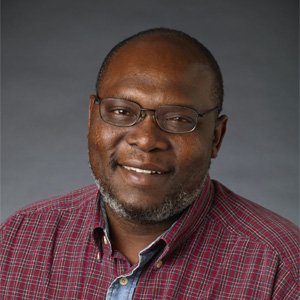
In our last installment of our interview with Professor Kusimba, we explored how, despite what many colonialist scholars thought, the complex and beautiful civilizations of East Africa were unequivocally African. For our final part, Professor Kusimba and I discuss the written sources waiting for any historian intrepid enough to try to conquer them, and the long, long, long history of his homeland.
Writing East African History
The Public Medievalist: So returning to Africa, so I’m curious because there is this paucity of written documents that we’ve been talking about. It’s interesting within the African context because they’ve got these sophisticated societies. They’re practicing Islam, which is a scriptural religion. So what do you think happened to those documentary sources– were they not produced? Were they not kept? What happened?
Kusimba: They’re there! Those documentary sources exist, but most of them were kept within families. The bulk of the archival sources that do exist today are curated in several places, including the Kenya National Archives, the Institute of Swahili Research at the University of Dar es Salaam, Libraries at Fort Jesus, and Lamu Museum in East Africa. However, many original documents were taken in the 1940 through the 1960s by European collectors and anthropologists. My understanding is that so most of those documentary sources are now at the University of Bergen in Norway.
Professor Rex Sean O’Fahey and his colleagues, including Anne Bang have worked on them. Anne has especially been instrumental in having some of the documents restored and digitized. Professor O’Fahey has been working on making these documents available. But after years of the scholarly community waiting, we have begun to wonder whether some of those will see light of the day.
There are also excellent archives of documents in Zanzibar—these mostly document the events of East Africa under the Omani sultanate (from around the years 1940-1963). Court records document everyday events including conflicts over land, discussions on the position and role of under the Omani sultanate, debates on sharia law versus traditional law or mila. These documents are useful for legal anthropologists and historians.
Economic anthropologists, historians, and geographers will find that port records on exports and imports exist for the past nearly 300 years. Some of this can also be found in Lisbon, Mumbai, Surat, Mombasa, and Zanzibar. And then you have chronicles. Each city had chronicles. The Pate and Kilwa Chronicles are the most well-known, but other towns and cities had their own chronicles as well. From these chronicles, careful and imaginative scholars will glean extremely useful information for reading and interpreting local, traditional histories and daily struggles of the coastal peoples to make a living during some of the most traumatic moments of African history. This is the period when globalization and capitalism—which structures current modes of relationship—began to establish its roots at the expense of Africans.
It is also important to remember that most of these chronicles were written in the 18th century. They recount events that occurred many years before. One should therefore be aware of the context in which they were written. I am not necessarily dismissing their authenticity, but as a scholar, I am careful with the potential dangers of invention, innovation, glorification, and creation of alternative histories to justify or lament present-day experiences. Like any document, I think that one should read them very carefully. They do have their own problems and this, as I understand it, is not unique to these documents.
A Linguistic Hurdle
Kusimba: There’s one problem. Another is that most of the chronicles are written in Swahili, but using the Arabic script.
TPM: Wow. That’s got to be very complicated!

Kusimba: Yeah, that’s complicated because few non-native scholars, and even relatively few native ones, can read it! As far as I know only a handful of archaeologists who work on the coast today are literate in Arabic script or Swahili. And to understand these, you have to have both languages.
And so, I think that these archives are not being fully utilized. One other problem for East Africa is that the Portuguese Period there lasted from around 1500–1750; and it lasted until 1970 in Mozambique. The archives during that period are in Lisbon and in Portuguese.
Unfortunately for modern scholarship, we are impatient with learning and truly internalizing knowledge. Academia, perhaps ironically, does not reward scholars who spend significant time learning but are not, themselves, producing new knowledge in the form of scientific papers and books. The era of “public or perish” has killed real scholarship. Thus, some students would say, “Professor Kusimba, I would love to learn all these languages—Arabic, Swahili, Portuguese, and maybe English—fluently. But by the time I master these languages, I’m essentially going to be unemployable!” Yes, they would be knowledgeable, but basically too old to be employed.
TPM: Yes. Becoming fluent in four completely different languages and their historical variants could take a huge amount of time. And with no guarantee of being rewarded in the long run for all that effort, I can see why people just don’t do it. Hell, I had a hard enough time with Latin.
Kusimba: Yes. So it’s a question of time. And I just don’t think that kind of patience exits anymore in the academy except for the very few who might have independent means and don’t need a regular academic job to pursue their hobbies.
TPM: And that means that the only people who can do this work are rich hobbyists, which brings us right back to the nineteenth century model of scholarship.
Kusimba: A lot of young people want to have their PhD by the time they’re thirty, and then move on get tenure in their mid-thirties. At that point, it’s probably too late to learn and completely master another language. And so, our fantastic archives suffer as fewer and fewer scholars can consult them in their original form.
And I think part of the reason is, “Hey, wait a minute! Europeanists do this. Classical scholars take time to learn all these old languages. Why do we make it easy—why do we not insist that scholars who are interested in the global south do not in fact do the same?” Why do we have such a double standard? One for western scholarship and other for the global south?
If you look at Swahili poetry, it’s so advanced. These guys are writing poetry—at least what exists today—by at least 1400. And so these texts do in fact exist where they have been studied and those scholars who studied them initially translated them. I think that we do have evidence of very early, very sophisticated thinking and writing about daily life of Swahili people, by themselves. But we do not care to learn so we can engage their ideas. Why?!
TPM: Can you give me an example of this poetry? I imagine people would be very interested in seeing it.
Kusimba: I can think Al Inkishafi, Muyaka bin Haji, Swifa ya Nguvu Mali, Utendi wa Adamu na Hawa, Malenga wa Mvita, Malenga wa Mrima, Utenzi wa Mwana Kupona among many others.
Changing the Picture

TPM: Why do you think the image of East Africa, or of Africa, changed so radically between the Middle Ages and the Early Modern Period?
Kusimba: The European encounter with Africa occurred at the time of recovery following the devastating effects of the Black Death and the Little Ice Age. Europe recovered much faster than Asia and Africa. So, it was extremely difficult for European travelers to visualize societies so utterly devastated by these events—and by the slave trade. They found it impossible to imagine these places as capable of what was then defined as “culture”.
We have often undervalued the devastating effects of slavery. Imagine: during the slave trade, most Africans lived nearly every of the last four hundred years—from 1500 to 1870—as if it was their last. Not a single permanent building was erected in inland Africa, except the European Fortresses whose primary goal was to hold and ship young, healthy, handsome, and beautiful boys and girls with noted skills out of Africa for the benefit of Europe, the America, and some regions of Africa.
To justify such actions, Africa had to be dehumanized. It had to be portrayed as the place inhabited by brutes who were descendants of Ham. Yes, that Ham who was cursed by his drunken father Noah! His descendants, the Hamites were thus destined to serve others. And as brutes, they were seen to be incapable of making history. Today, many scholars who write a fragmentary history of Africa would deny they are furthering this dichotomy. But in the era of elitism that we find ourselves, this kind of scholarship is nevertheless alive and well.
A Final Thought
TPM: Is there anything else that you think it’s crucial for people to know about East Africa? If they, as non-specialists, wanted to look into this more, where is a good place to start?
Kusimba: I come from a region of the world whose history stretches back over 5 million years. We East Africans are the proud caretakers of the longest and, perhaps, richest heritages of humankind. Even our most recent history stretching back the last 5000 years is extremely complex. Thus, in East Africa, you find the most genetically diverse peoples in the world.
To develop a cultural history for each individual ethnic community who have lived and interacted with others during those years is a daunting proposition—and unfortunately anthropologists, historians, and geneticists often go about their business of classifying Africans in ways that create contentious and divisive histories. These histories have come to define daily experiences that were witnessed with horror in Rwanda in 1994 and are, today, silent as another genocide unfolds in East Africa—this time just north of the Great Lakes region in South Sudan, the world’s newest nation. The writing of history is thus a serious undertaking which needs to be sensitive and sensibly considered.
As an archaeologist who studies past people’s experiences, I use material culture as witness to the dynamic human experience. In my view, the primary objective my contribution to the wellbeing of humankind is to explain who we are and what we have been up to for the last five million years. I am also interested in using the information we have at our disposal today to imagine where we might be in the next 5 million years. So, everything that we each do, collectively, as individuals and nation states, must be geared to explaining the meaning of life, and our search for that elusive meandering river called happiness!
TPM: That’s a beautiful image, and I can’t think of a better place to stop. Thank you so much for taking the time to speak with me, it’s been an honor.
Kusimba: It’s been my pleasure.
The Public Medievalist does not pay to promote these articles, so we would love it if you shared this with your history-loving friends! Click to share with your friends on Facebook, or on Twitter.
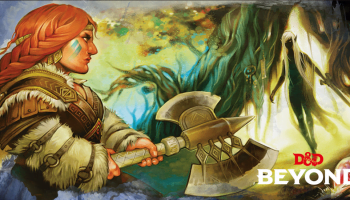
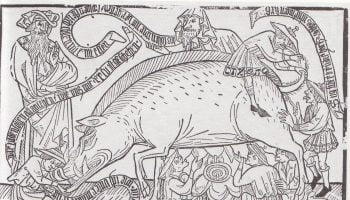

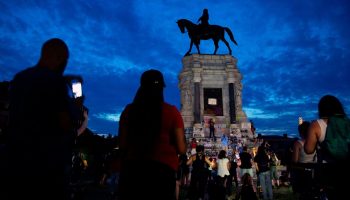
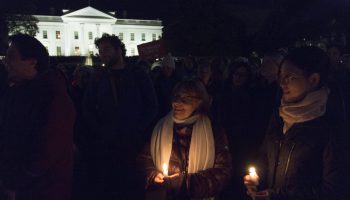
Comments are closed.